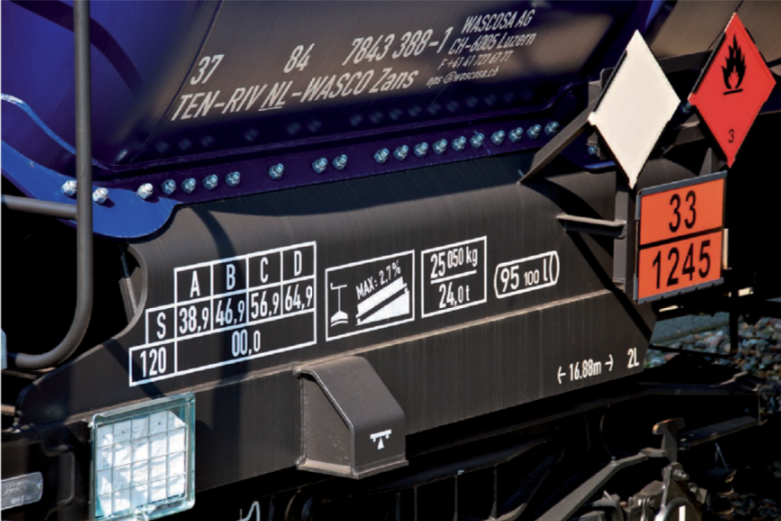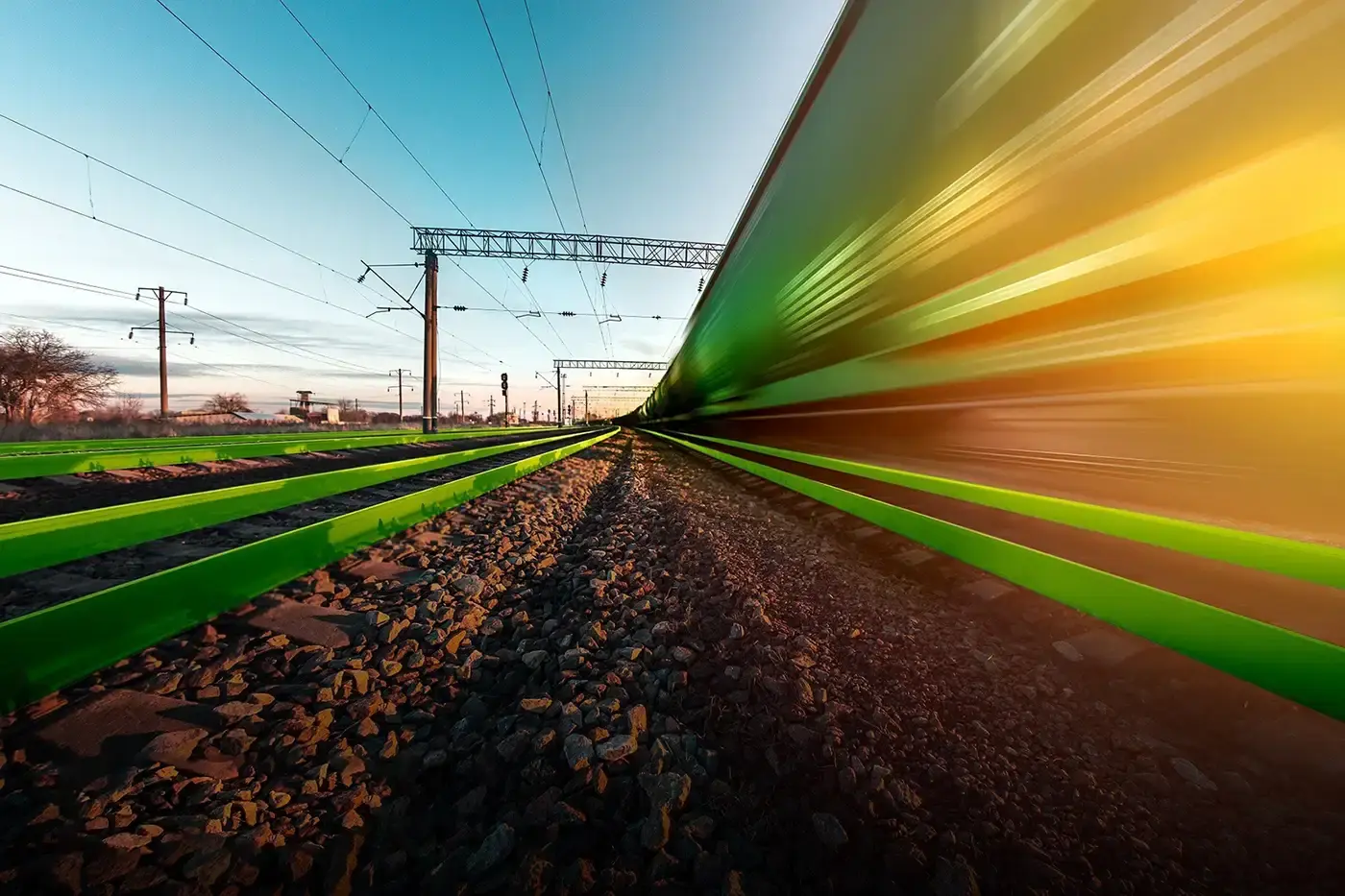Wagons overzicht
Wagons are the load carriers in rail freight transport. For almost every type of goods, there is a suitable type of wagon available. Often, the wagons can be provided by rail freight operators as part of a transport service or agreement, but it can also be the case that the customer uses or leases their own wagons.
Besides the wagons from rail freight operators, there are wagons owned by private parties, known as P-wagons (Private Freight Wagons). These are often special wagons developed in close collaboration between the railway customer and the railway company.
WHAT TYPES OF WAGONS ARE THERE?
This page shows a selection of the main types of wagons and their characteristics. Wagon types always have an abbreviation with a specific meaning. The first letter (uppercase) indicates the type of wagon, and the lowercase letters describe properties such as length, maximum axle load, number of axles, and maximum allowed speed.
OPEN WAGON (E-TYPE)
E-wagons are wagons with a steel box and a flat (steel) bottom without a roof. They are used for transporting bulk or voluminous goods like waste wood, scrap, coal, and sugar beets, which do not need protection from adverse weather conditions.
Characteristics of an Eanos, the four-axle open wagon:
- Loading capacity: 82.5 m³
- Maximum load weight: 66 tons
HOPPER WAGON (F-TYPE)
F-type wagons are used for bulk cargo that is unloaded by manually or automatically opening hatches. These are self-unloaders, meaning the load is discharged by gravity. A well-known example is the Falns, a bulk wagon primarily used in the Netherlands for transporting coal and ores. It is an open hopper wagon, and the goods do not need protection from adverse weather conditions.
Characteristics of the four-axle hopper wagon:
- Loading capacity: 85 m³
- Maximum load weight: 65 tons
CONTAINER FLAT WAGON (L-TYPE AND S-TYPE)
This wagon is specially made for transporting containers and swap-bodies of various sizes. L-types are two-axle and S-types are four-axle.
Characteristics of the Sgns, the four-axle container flat wagon:
- Maximum load weight: 70 tons
- Number of loading units: 3 TEU
FLAT WAGON (K-TYPE (2-axle), R-TYPE AND S-TYPE (4-axle))
The flat wagon is commonly used for transporting metal products (pipes, steel coils), forestry products, machinery, tractors, etc. The sides can be folded down, making loading and unloading easy. The R-types have bogies and are extra-long. Specific S-types are equipped to transport, for example, trees or steel rolls. These flat wagons can be equipped with a tarp for protection against weather when transporting paper rolls, steel rolls, compact palletized units, household appliances, and more.
Characteristics of the Kbs, the two-axle flat wagon:
- Loading floor: 34.6 m²
- Loading space: 15.6 m³
- Maximum load weight: 27 tons
CLOSED WAGON WITH SLIDING WALLS (H-TYPE)
Highly suitable for transporting palletized loads that need protection from adverse weather conditions. The wagon has 4 large aluminum sliding doors (2 on each side). Each door makes half the wagon length accessible. This makes side loading and unloading with, for example, forklifts very easy. This widely used wagon is utilized for transporting large paper rolls, refrigerators, and auto parts, among others.
Characteristics of the Habbills, a four-axle sliding wall wagon with internally movable partitions:
- Loading floor: 62.5 m²
- Loading space: 165.6 m³
- Maximum load weight: 58 tons
CLOSED HOPPER WAGON (T-TYPE)
The T-wagon is characterized by an opening or rolling roof. T-wagons are generally equipped for transporting bulk loads that need to be loaded from above. They can be configured as bottom dumpers or with a fixed floor. These are generally used for goods that need to be transported securely sealed, such as steel plates, lime, cement, and fertilizers, as well as agricultural products like grains and cocoa or coffee beans.
Characteristics of the Talns, the four-axle covered hopper wagon:
- Loading capacity: 77.5 m³
- Maximum load weight: 55 tons
GRAIN WAGON (U-TYPE)
For transporting grains and other similar bulk goods, special hopper wagons are used, which are specifically designed for such cargo. These wagons can also fall under the T-type category.
Characteristics of the four-axle Uagpps:
- Loading capacity: 123 m³
- Maximum load weight: 66 tons
TANK WAGON (Z-TYPE)
A tank wagon is a goods wagon suitable for transporting liquid products, whether under pressure or not. Tank wagons are typically used for transporting petroleum and petroleum products. Additionally, chemicals and gases (LPG, propane, chlorine) are transported using tank wagons.
Characteristics of the Zagks, the four-axle
- LPG tank wagon:
- Loading capacity: 116 m³
- Maximum load weight: 59 tons
Railway sections in a country that are suitable for D-weight are divided into letters and numbers D2 and D4. The numbers indicate the maximum ton/meter weight allowed. This unit indicates how many tons per meter of track are permitted. For category D2, the maximum tons/meter weight is 6.4 t/m calculated over the length of the buffers, and for D4, it is 8.0 t/m. A wagon that can have a maximum total weight of 90 tons and a length of 14 meters over the buffers results in 6.4 tons/meter weight (weight divided by length).
Vehicle mass in length = P
| A | B | C | D | ||
|---|---|---|---|---|---|
| 16t | 18t | 20t | 22,5t | ||
| 1 | 5,0t/m | A | B1 | ||
| 2 | 6,4t/m | B2 | C2 | D2 | |
| 3 | 7,2t/m | C3 | D3 | ||
| 4 | 8,0t/m | C4 | D4 |
The photo below shows the loading grid of a tank wagon that can be loaded with a maximum of 64.9 tons on a D- track section. The S indicates how much the wagon can load at 100 km/h (most common), and if the wagon is empty, it can travel at 120 km/h. Whether a particular transport by rail is allowed is determined by the wagon and the track section. The track section with the lowest letter code on a specific route determines the limit for the entire route.
The deployment of railway equipment is therefore determined by three factors: the maximum weight that the wagon can have, the maximum axle load that applies on a track section, and the minimum speed that applies on a track section. On certain track sections, speed restrictions apply due to structures (bridges), upper structure limitations, or ground stability. If a track section does not allow the desired weight or ton/meter weight, a request for extraordinary transport must be submitted to ProRail.

